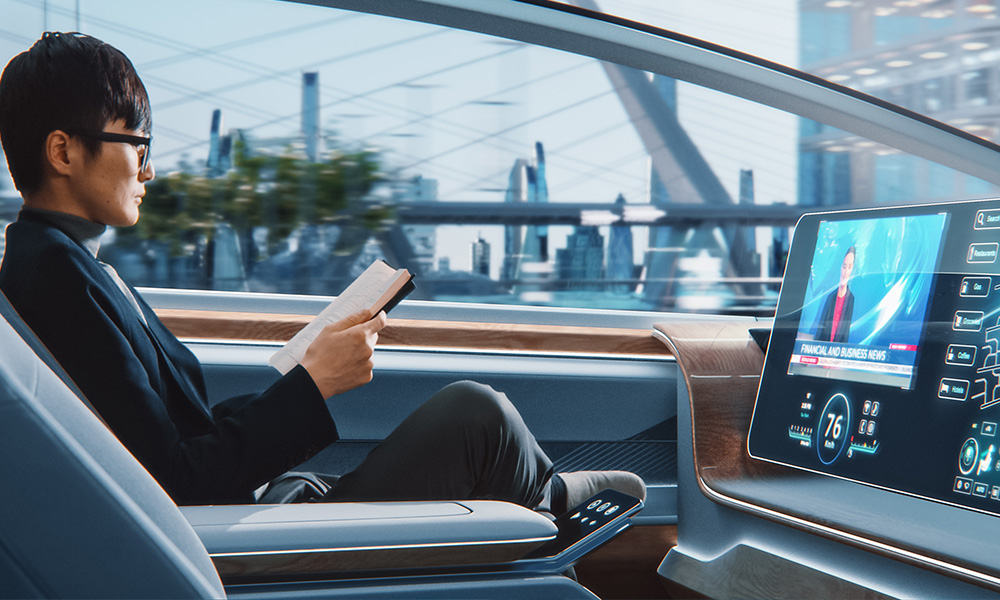
Are you tired of being stuck in traffic and dealing with the stress of driving? Well, self-driving cars could be the solution to all your problems! These autonomous vehicles have the potential to be the ultimate wingmen for your road-trips, improving safety, reducing traffic congestion, and increasing mobility for people who cannot drive. But, before you trade in your car for a self-driving one, let’s dive deeper into the implications of these futuristic cars on energy consumption and emission reduction.
Imagine never having to worry about taking a wrong turn again, or even getting stuck in traffic. A self-driving car is able optimize routes and help avoid unnecessary stops, meaning that you will finally be able to cut down on the annoying “are we there yet” questions from your kids and be able to spend more time just enjoying the ride. If all the cars that were on the road were self-driving, traffic congestion would be highly reduced, which would result in much less fuel consumption and emissions.
Human drivers often make mistakes or exhibit unpredictable behavior that can lead to traffic congestion and slowdowns. Self-driving cars, on the other hand, can communicate with one another and coordinate their movements to avoid these bottlenecks. This not only improves the overall flow of traffic, but it also reduces the amount of fuel that is wasted sitting in traffic.
Self-driving cars not only have the ability to be programmed to drive more efficiently, making your journey not only smoother, but much more enjoyable. Most notably, shorter trips to use the bathroom!
Here is a compiled list of self-driving cars that are currently available or in development:
- Tesla Autopilot and Full Self-Driving (FSD) – Tesla’s autonomous driving system is available on all Tesla electric vehicles, including the Model S, Model 3, Model X, and Model Y.
- Waymo Driver – This is Alphabet’s self-driving technology division, which has been tested on the roads in Phoenix, Arizona, and is currently in the process of being integrated into Chrysler Pacifica minivans and Jaguar I-PACE electric SUVs.
- Cruise Automation – A self-driving car company that is owned by General Motors. It is currently testing autonomous Chevrolet Bolt electric cars on the roads in San Francisco, Phoenix, and Detroit.
- AutoX – A self-driving car technology company that has developed a driverless car operating system that can be retrofitted to existing vehicles.
- Nuro – a self-driving delivery vehicle company which is using custom-built electric vehicles for delivery services.
- Aptiv – A global technology company that has developed an autonomous driving system that can be integrated into existing vehicle platforms.
- Voyage – An autonomous vehicle company that is focused on providing transportation services for retirement communities and other “last mile” applications.
- Zoox – A self-driving technology company that has developed its own autonomous vehicle platform and is working on a robotic ride-hailing service.
- nuTonomy (now part of Aptiv) – a self-driving car software development company, it was acquired by Delphi Automotive which is now known as Aptiv.
- Baidu Apollo – A open autonomous driving platform developed by Baidu.
There are many more companies, as well as startups and other major automakers that are currently working on their own self-driving cars, and many more are expected to join the race in the near future.
How Self Driving Cars Reduce Energy Consumption
Self-driving cars could also reduce the need for personal vehicle ownership by being summoned on-demand, which would reduce the number of cars on the road and lower the demand for fuel. And for those who love to share, self-driving cars could enable car-sharing programs and fleets, which would allow people to use vehicles more efficiently and reduce the need to own a car, meaning you can finally afford that new video game console you’ve been eyeing.
Self-driving cars can also reduce energy consumption through using optimized routing. Traditional navigation systems often provide the quickest route to a destination, but this isn’t always the most energy-efficient option. Self-driving cars are able to take into account certain factors such as road incline and traffic patterns in order to determine the most efficient route. This can lead to significant fuel savings, particularly for vehicles that are used for long trips or commercial deliveries.
With the increased use of self-driving cars, it may also lead to people driving more overall, as it would make it easier and much more convenient for people to travel. According to a study conducted in California in 2019, it was reported that 21%-35% of autonomous vehicles owners would drive more – especially on the weekends – partially because of the automated operating systems. This could result in driving many more miles, much more fuel consumption, and even more emissions, which means you might have to invest in a pair of bigger pants for all the extra sitting you’ll be doing.
These type of cars rely on advanced sensors, cameras, and other technologies, which require significant energy to operate and may increase the energy consumption of cars. However, although electric vehicles are seen as a green alternative to a traditional car with gasoline, they still require a significant amount of energy to produce and maintain, and further research is needed to understand the energy consumption and carbon footprint of manufacturing and disposing large number of electric autonomous vehicles.
Some advantages and disadvantages of self-driving vehicles include:
Pros:
- Improved Safety: Self-driving cars are equipped with advanced sensors and cameras that allow them to detect and respond to potential hazards on the road. This could reduce the number of accidents caused by human error.
- Increased Efficiency: Self-driving cars are able to optimize routes and avoid unnecessary stops, which could reduce traffic congestion and increase fuel efficiency.
- Enhanced Mobility: Self-driving cars could provide mobility for people who are unable to drive, such as the elderly and people with disabilities.
- Reduced Costs: Self-driving cars could reduce the need for personal vehicle ownership, and enable more efficient car-sharing programs, which could lower the cost of transportation for individuals.
- Environmental Benefits: Self-driving cars could reduce emissions by reducing traffic congestion and improving fuel efficiency.
Cons:
- High Costs: The development, production and implementation of self-driving cars is a highly-costly process
- Technical Issues: Self-driving cars rely on complex technologies, and there is a risk of technical malfunctions that could cause accidents.
- Security Risks: Self-driving cars are vulnerable to hacking and cyber-attacks, which could compromise the safety of passengers and other road users.
- Job Losses: The widespread use of self-driving cars could lead to job losses in the transportation industry, as human drivers are replaced by machines.
- Privacy Concerns: The use of cameras and sensors in self-driving cars raises concerns about privacy and the potential misuse of personal data.
- Legal and regulatory challenges, which may vary across countries and regions and may delay the deployment and mainstream adoption of self-driving cars.
- Dependence on electricity and charging infrastructure, which may not be well developed in some areas, affecting the usability of electric autonomous vehicles.
While it is still early days for self-driving cars, the technology has the potential to bring about significant improvements in energy efficiency and help to reduce our dependence on fossil fuels.
It is important to keep in mind, that this might not happen overnight as the technology and infrastructure need to catch up to the benefits. However, with the advancements in technology, we can be optimistic that self-driving cars will play a significant role in our sustainable transportation future.
Are Self-Driving Cars the Way to Go?
Self-driving cars have the potential to be your new best friend, reducing energy consumption and emission reduction in several ways. But, like all new friends, they have their downsides as well. So, before you hop in the driver’s seat, make sure to do your research and understand the full implications of these futuristic cars on energy consumption and emission reduction.
